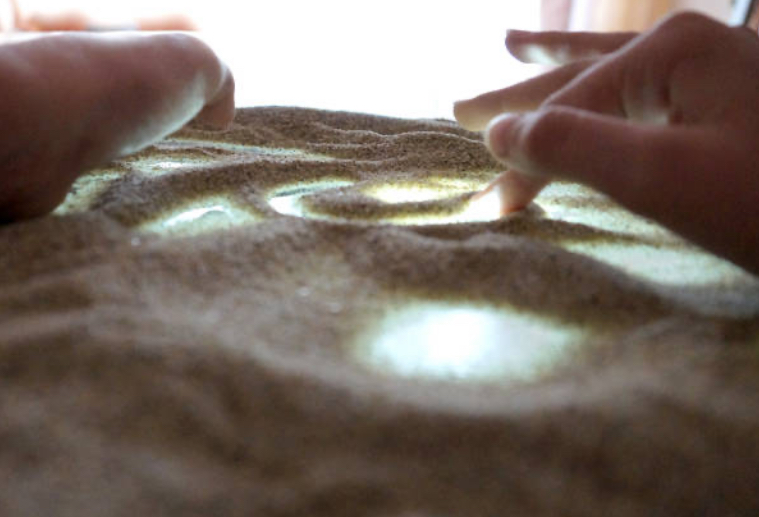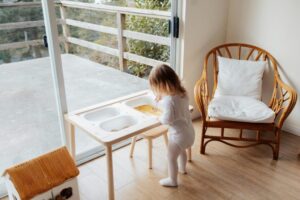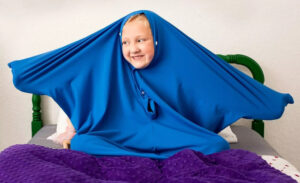LED light tables, also called light boxes, combine soft illumination with tactile materials to create a calming, multi-sensory experience. Autistic children often benefit from these tools as they support fine motor planning, visual focus, emotional regulation, and sensory processing—all in one gentle, engaging activity.
🔍 Why Light Tables Help with Sensory Integration
- Visual & tactile harmony: Illuminates translucent items for depth and focus while allowing hands-on exploration.
- Supports calming attention: Soft lighting reduces overstimulation and gently guides focus.
- Boosts fine motor skills: Encourages precision through arranging beads, scooping shapes, tracing, and sorting.
- Strengthens cause‑and‑effect learning: Children learn that light magnifies color and texture when materials are placed on the surface.
👩⚕️ Expert-Backed Benefits
- Therapists in sensory integration highlight light tables as tools that strengthen visual-motor integration and sensory processing abilities.
- Based on sensory room research, combining lighting effects with tactile play creates a personalized sensory environment that encourages self-regulation.
🎨 How to Use Light Tables at Home or in Therapy
- Start with simple materials—colored beads, translucent blocks, tracing sheets.
- Invite your child to trace shapes or draw with finger paints to reinforce tactile and visual senses.
- Integrate tools like tweezers or cups to promote fine motor control.
- Combine music or visual timers to create soothing sensory routines.
- Always supervise and keep parts accessible only under adult guidance.
🛒 Top 3 LED Light Table Picks for Autistic Children
⭐ Portable LED Light Table Panel (Slim & Bright)
Best for: On-the-go sensory routines or desktop tactile stations
This lightweight, slim LED panel is easy to move and store. It provides consistent lighting for shaping, tracing, and object matching. Ideal for calming corner setups or setting up sensory play anywhere.
Parent tip: Use colored beads in clear cups to highlight contrast and build focus.
🌈 Light Table with Adjustable Brightness Modes
Best for: Mood regulation and multi-sensory exploration
This model allows changing light intensity, making it perfect for children with sensory sensitivity to brightness.
Parent tip: Pair with water beads or colored gel blocks for sensory layering.
🧠 GuideCraft LED Light Table (Tabletop Version)
Best for: Group play, classroom, or dedicated sensory room use
With a large surface and built-in raised edge, this tabletop lightbox supports cooperative activities—perfect for matching games, tracing sheets, or sensory bin overlays.
Parent tip: Combine with textured items like sorting trays or pattern boards on top.
🧠 Light Table Activity Ideas
- Color Sorting Challenge: Sort translucent tokens or beads by shape and hue.
- Trace & Create: Use dry-erase markers on transparent sheets to draw shapes or letters.
- Tactile Overlays: Place textured fabrics or patterns on the surface for combined sensory input.
- Shadow Play: Explore how light creates shadows using small figurines or natural objects.
🙋♀️ Frequently Asked Questions
Are light tables safe for autistic children?
Yes—if used as intended and under supervision. Ensure the light panel is cool to the touch, stable, and that small objects are age-appropriate.
How long should play sessions be?
Start with 5–10 minutes. Children may naturally engage longer as they become familiar with the stimulating environment.
What should I put on a light table to support sensory regulation?
Use color beads, translucent blocks, tactile overlays (like sandpaper or felt), or minimal tracing sheets—tailored to your child’s sensory needs.
As an Amazon Associate, SensoryGift.com earns from qualifying purchases. Your support helps us share sensory guidance with families.



